Business attire is more than just clothes, it’s a silent language that speaks volumes before you even say a word. In any career, professional clothing plays a key role in shaping first impressions, building credibility, and showing that you respect the workplace dress code. The right outfit can make you feel confident, capable, and ready to handle any challenge that comes your way.
Whether you’re decoding office attire rules for your first job or perfecting your interview outfit for that dream position, understanding how to dress with purpose is essential. This guide will walk you through styles, tips, and real examples to help you dress for true workplace success.
Business Attire and Its Importance in the Workplace
Business attire refers to the range of professional clothing worn in corporate or formal work settings. It often depends on the workplace dress code, which could range from business professional clothing to business casual style or even casual attire in creative industries. Your office attire reflects not only your personality but also your understanding of the company’s culture and office dress guidelines.
Research shows that dressing appropriately increases confidence, boosts productivity, and can lead to better networking opportunities. Companies that maintain a clear formal dress code often experience better client trust and team discipline, especially in fields where appearance matters.
Types of Business Attire for Different Work Environments
There are multiple variations of corporate wear, each suitable for specific scenarios. For formal meetings or presentations, business formal wear is expected, often involving tailored suits, dress shirts, pencil skirts, and professional heels. On the other hand, many modern offices now embrace business casual style, which can include smart casual outfits like blazers and jackets, trousers and slacks, and polished loafers and oxfords.
In highly formal events such as black tie business dress occasions, the expectation might be semi-formal office look with elegant ties and scarves, coordinated belts and accessories, and minimal jewelry to maintain a polished appearance. Understanding formal vs business casual standards will help avoid confusion and embarrassment.

How to Choose the Right Business Attire
When deciding what to wear to work, you need to balance professionalism with comfort. Workwear essentials like well-fitted blazers, pencil skirts, and classic dress shirts form the base of most wardrobes. You should also keep in mind your company’s dress code policy in companies, which might include gender-neutral workwear or unisex office clothing.
A practical way to decide is to look at professional dress code examples from your field. For instance, finance and law often require business professional clothing, while tech companies might lean toward casual attire or smart casual outfits. To explore detailed workplace fashion guidelines, you can visit Indeed’s Career Advice on What to Wear.
Business Attire for Interviews and Client Meetings
Your interview outfit is often your first opportunity to impress a potential employer. Interview attire do’s and don’ts stress clean lines, pressed fabrics, and avoiding flashy patterns. Men might opt for tailored suits with dress shirts and ties and scarves, while women could choose a semi-formal office look with professional heels or loafers for comfort.
For client meetings, tips for dressing for a meeting suggest dressing one level more formal than your client to convey respect and authority. If the meeting is virtual, don’t forget that professional grooming tips and visible business formal wear still matter.
Table: Comparing Common Business Attire Styles
| Attire Type | Common Pieces | When to Wear |
| Business Formal Wear | Tailored suits, dress shirts, ties and scarves, professional heels | Court appearances, formal presentations, senior client meetings |
| Business Casual Style | Blazers and jackets, trousers and slacks, loafers and oxfords, minimal jewelry | Everyday office wear, team meetings |
| Smart Casual Outfits | Knit tops, cardigans, unisex office clothing, chinos | Creative workplaces, informal Fridays |
| Black Tie Business Dress | Tuxedos, long dresses, polished belts and accessories | Award ceremonies, corporate galas |
Clothing Etiquette and Workplace Policies
Following clothing etiquette for the workplace means understanding what not to wear at work, such as overly casual items like ripped jeans or distracting prints. Many companies issue an employee dress policy that may allow gender-neutral office outfit ideas or require certain uniforms.
Corporate HR departments often use dress code policy in companies to create consistency and reduce misunderstandings. For an in-depth look at legal and cultural considerations of dress policies, you can check SHRM’s Workplace Attire Guidelines.
Dressing for Career Success
Experts agree that dressing for career success is about more than just clothing. For practical tips on looking polished and confident in any workplace, visit Go Techanic. Your how to style business wear approach should consider grooming, posture, and confidence. Investing in quality pieces like loafers and oxfords, well-pressed dress shirts, and classic blazers and jackets can make even budget-friendly wardrobes look high-end, supporting how to look professional on a budget.
By aligning your attire with your career goals and company culture, you can project competence and professionalism that stands out in any workplace.
FAQs:
What is acceptable business attire in the US?
In the U.S., acceptable business attire depends on the dress code ranging from formal suits to business casual outfits like slacks, blouses, and dress shoes.
Can I wear jeans as business attire?
Jeans are typically not considered business attire unless your workplace has a relaxed or smart casual dress code.
Does business attire require a suit?
Not always a suit is standard for business formal, but business casual may allow slacks, skirts, or dresses without a blazer.
What to wear if you don’t have business attire?
Choose neat, clean, and simple clothing like a plain shirt, dark trousers, or a modest dress with closed-toe shoes.
What is not considered business attire?
Casual items like ripped jeans, shorts, T-shirts, sneakers, and overly flashy or revealing clothing are not business attire.


